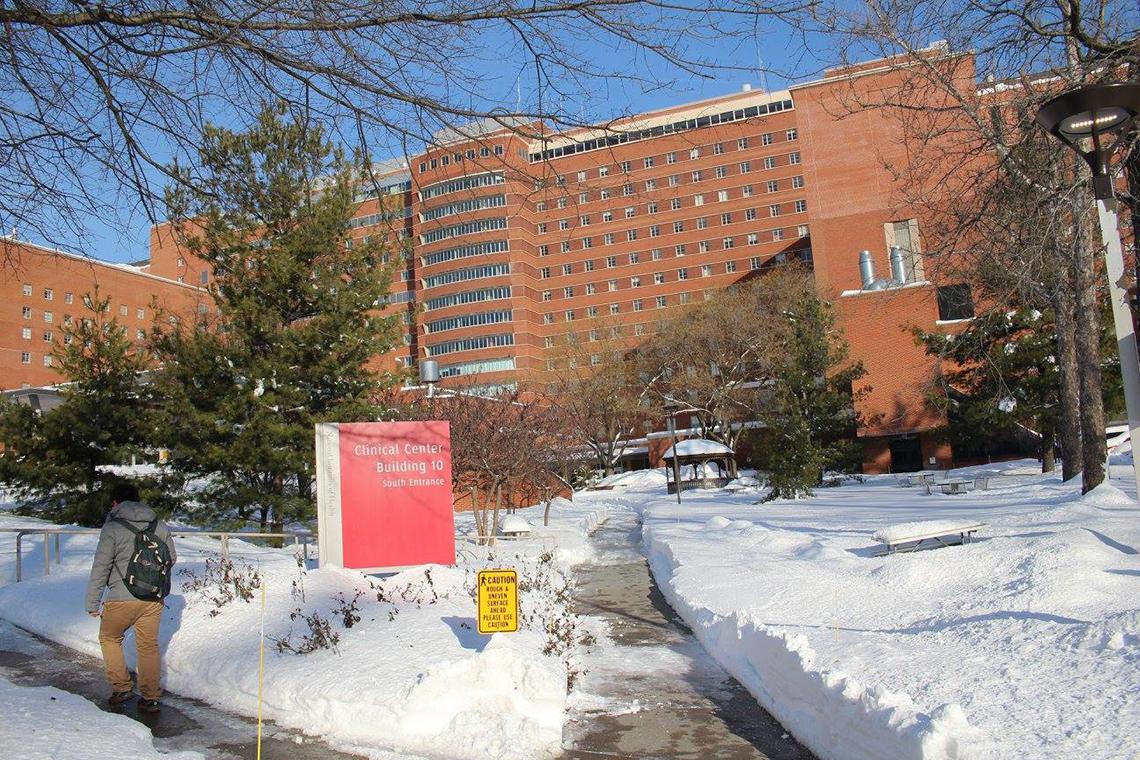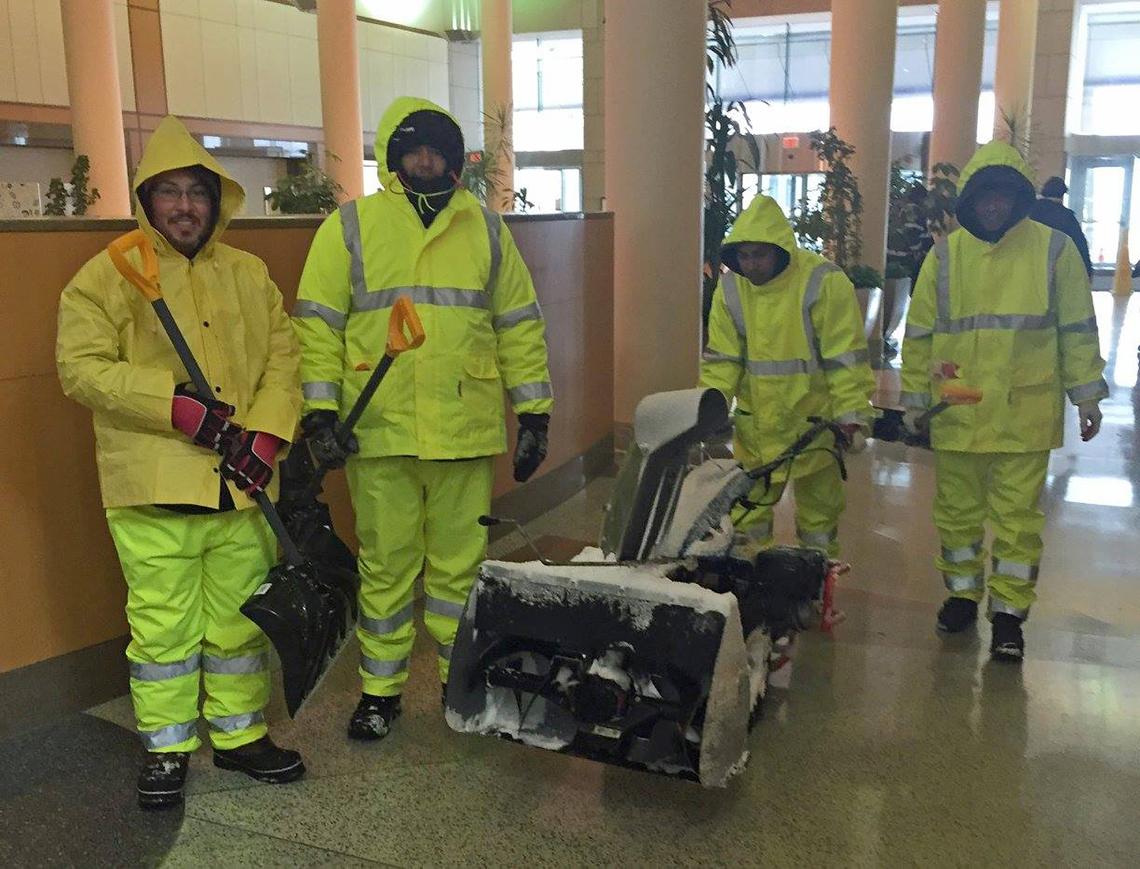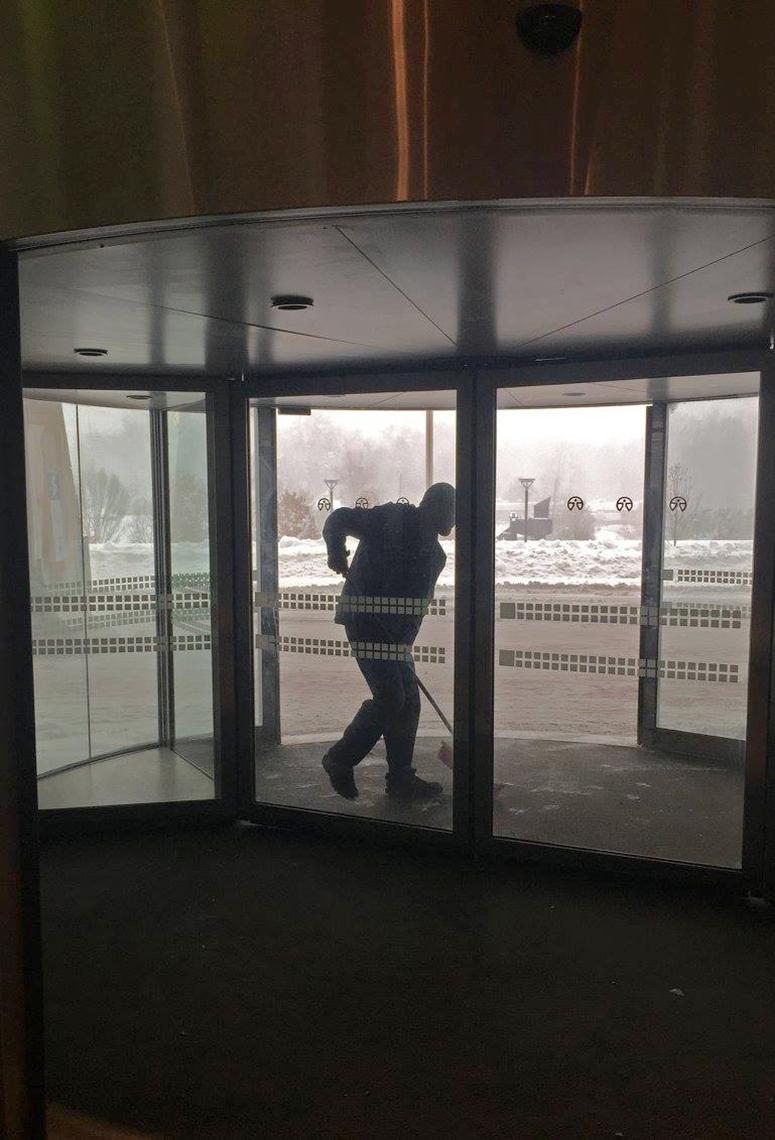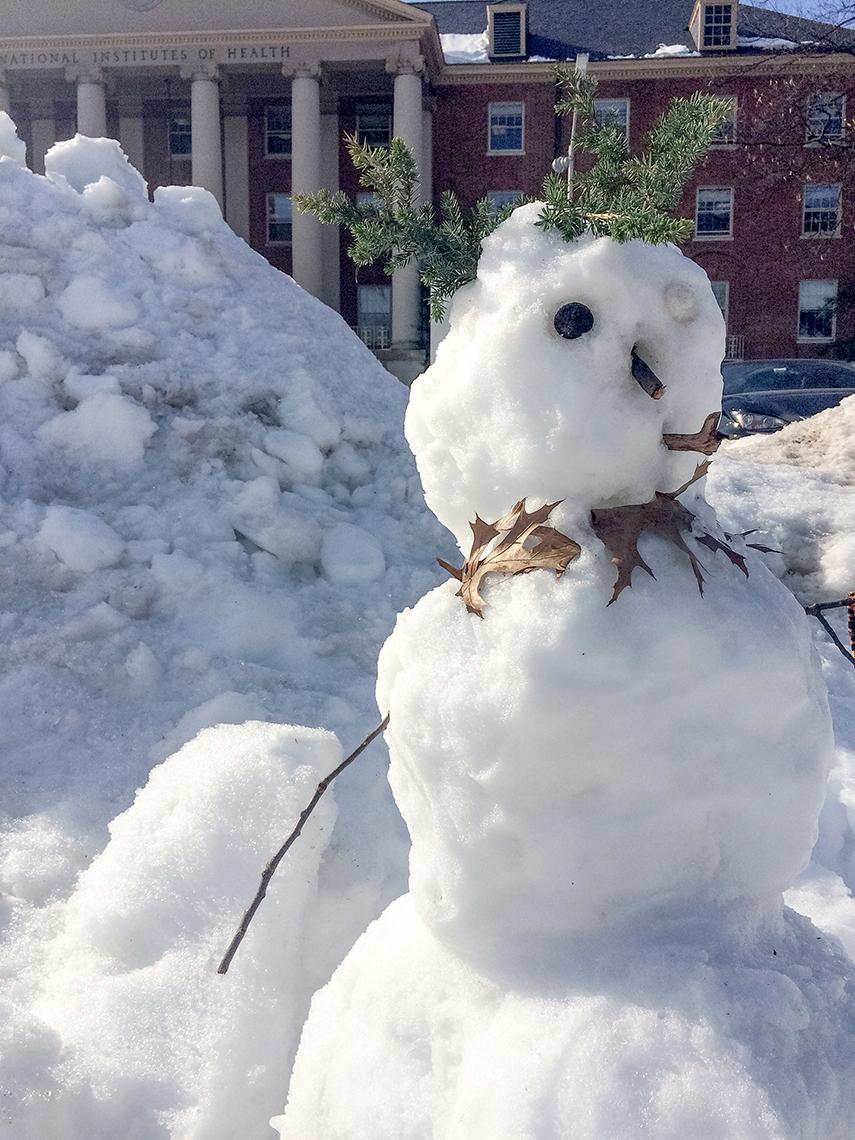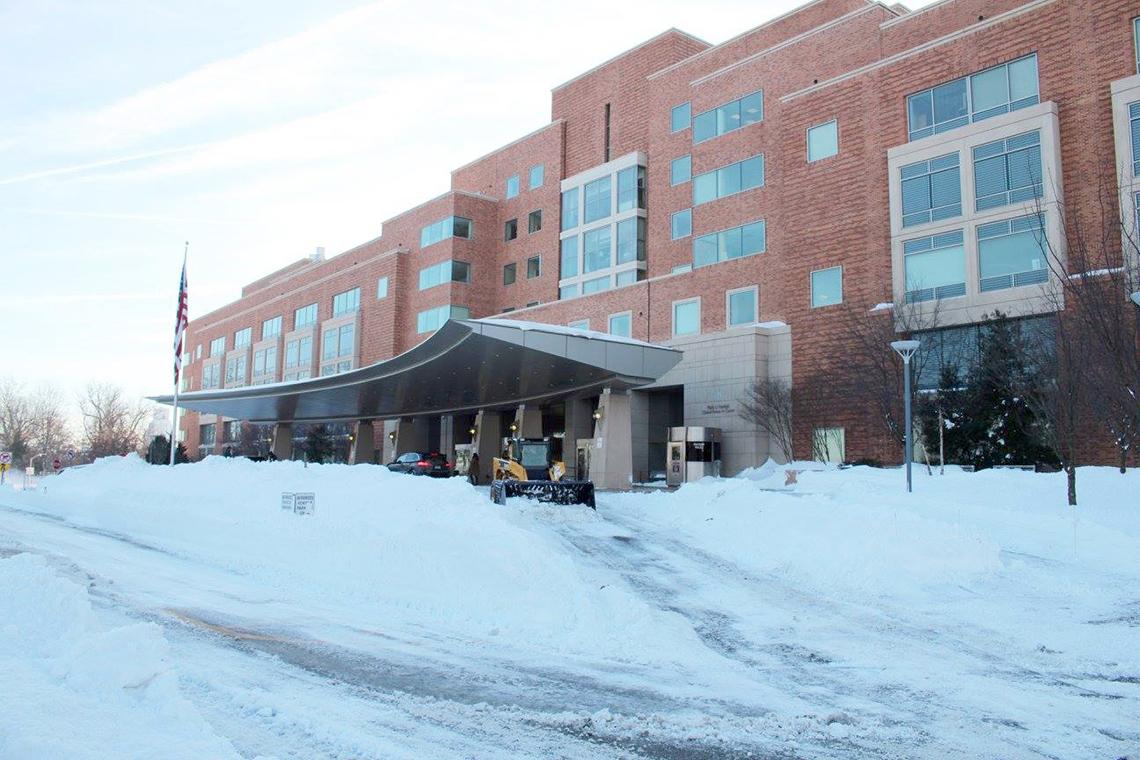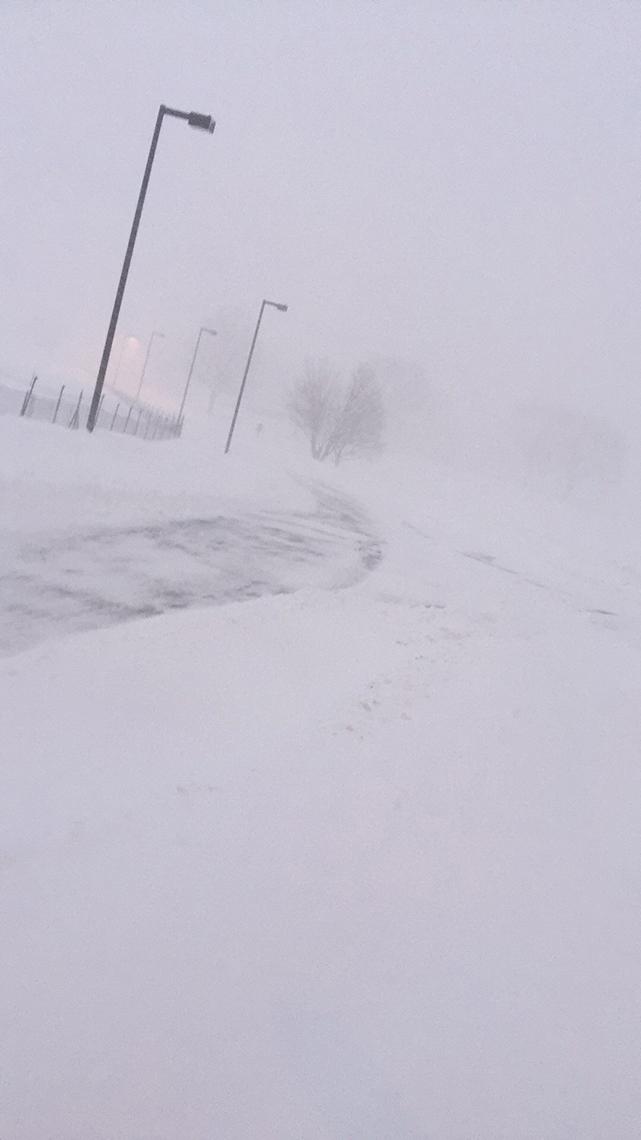‘CUP’ Runneth Overtime
Blizzard Calls Forth Best of NIH
Whether you called it Jonas, Snowzilla or something not suitable for an employee newsletter, the blizzard of Jan. 22-23 became an opportunity for NIH’ers to display their toughness and ingenuity.
The storm, which dumped about 2 feet of snow on the area, technically closed federal offices in the D.C. metro area for a few days, but that meant only that many employees teleworked from home, while others—those in charge of patient care, animal welfare, security and other critical services—showed up for work as usual and sometimes stayed way longer than expected.
On the telework side, according to the Center for Information Technology, normal VPN (virtual private network) usage averages about 2,500 connections per day. Those numbers spiked in the aftermath of the storm.
While many NIH’ers can work remotely, the NIH security guard staff is expected to show up in inclement weather if at all possible. At the NIH Animal Center in Poolesville, one of the officers volunteered to pick up others in his all-terrain vehicle but was unable to give everyone a ride back home. That left some of the guards stranded at their duty station, with few roads in rural Poolesville cleared for safe travel. Some of the guards who made it in stayed for more than 2 days, with no facilities for sleeping and no snack shop or vending machines. The guards remained on hand to protect the facility, the workers deemed essential and the animals. On Monday, Jan. 25, CIT had 9,996 unique VPN users. The next day, there were 10,383 unique VPN connections. “That was the peak,” said Dan Luxenberg, senior advisor and acting service manager for communications and outreach at CIT.
Said Dr. Charmaine Foltz, director, Division of Veterinary Resources: “For me, what is remarkable are the people who sleep at work to make sure that the animals are cared for. Contract staff stayed over Friday, Saturday and Sunday, both in Bethesda and Poolesville. Vets at both sites stayed over Friday and Saturday. Also, remarkably, all vets were here Monday (Jan. 25) except one stuck in Atlanta.”
According to the Office of Research Facilities’ Division of Facilities Operations and Maintenance, on the Bethesda and Poolesville campuses:
- Snow removal included 6 miles of roadway, 10 acres of parking lots and 21 miles of sidewalk. About 2.5 miles of road and 2 miles of sidewalk were kept open during the blizzard.
- Equipment included more than 75 machines, ranging from large tractors with snow blowers and front-end loaders to sidewalk machines.
- Labor time included 178 hours of 24/7 during the week of Jan. 22-29, with another 20 or so hours to go at press time.
- More than 50,000 tons of snow were plowed and removed.
The CUP is one of the largest utility plants in the U.S., producing steam, chilled water and cogenerated electrical and thermal energy for the Bethesda campus, Moss explained. Steam and chilled water is distributed via a complex network of more than 7 miles of pipeline.On campus, the NIH Central Utility Plant (CUP) staff “rose to the occasion in an exemplary way in preparation for the blizzard,” said Brad Moss of ORS/ORF. “Pre-planning for the storm was critical. Twenty-seven staff remained in the CUP, around the clock, to ensure that CUP operations were maintained seamlessly.”
The total energy production (electricity plus steam) from NIH’s Central Utility Plant during the storm was equivalent to the hourly average consumption rate of approximately 63,000 households, said Moss.
At the Clinical Center, more than 250 staff slept over in order to be available for patient care. News media stories focused on nurse Alex Classen, who carried buckets of snow indoors so that an ill pediatric patient could enjoy it. Other patients, including some from Jamaica, had never seen snow and were glad to experience it.
On balance, though, most NIH’ers seemed glad to see the snowstorm go.

